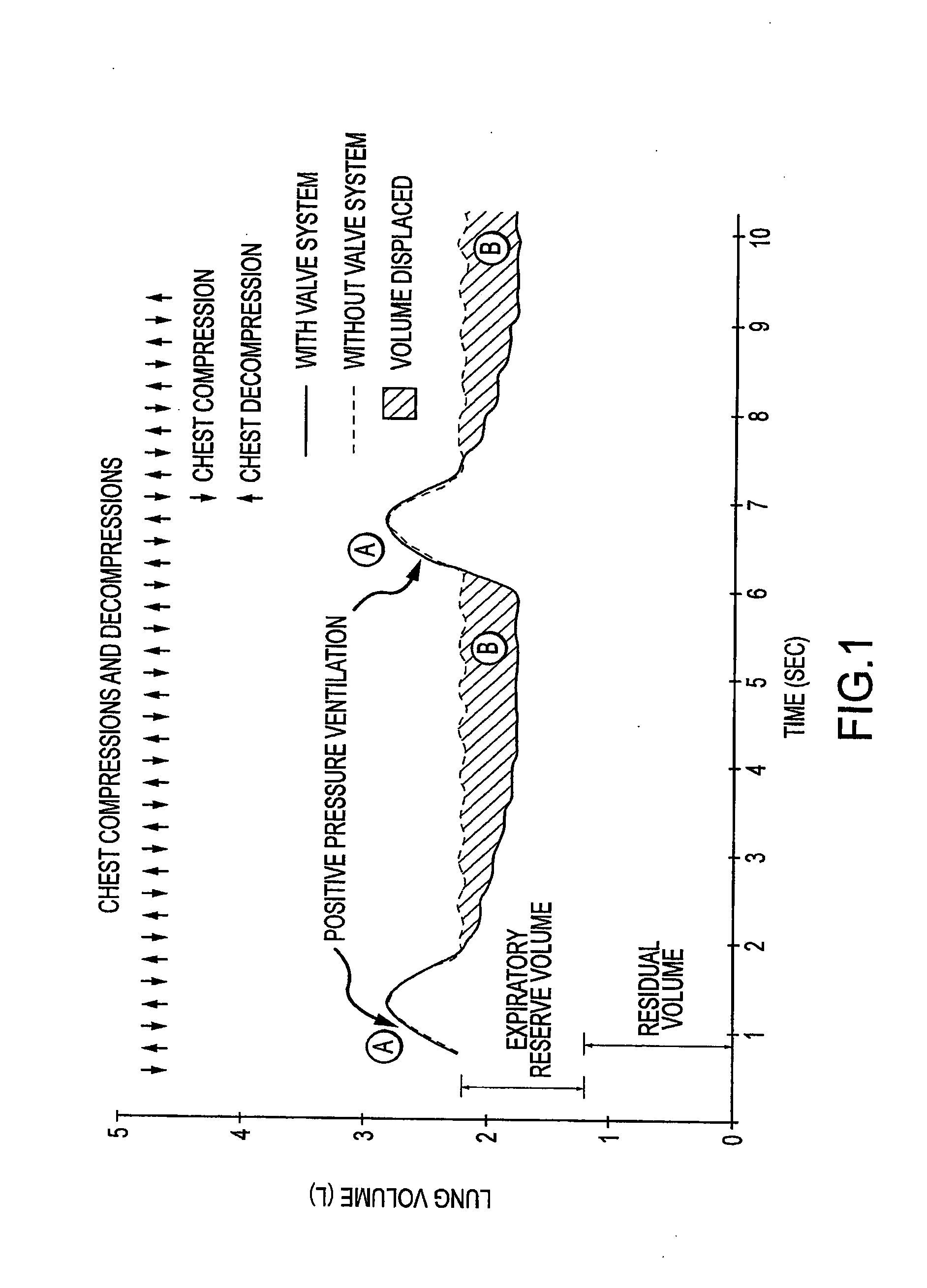Systems and methods to increase survival with favorable neurological function after cardiac arrest
a cardiac arrest and neurological function technology, applied in the field of cardiac arrest, can solve the problems of poor blood flow to the heart and brain with traditional closed-heart cpr, and achieve the effects of favorable neurological function, increased survival, and favorable neurological function
- Summary
- Abstract
- Description
- Claims
- Application Information
AI Technical Summary
Benefits of technology
Problems solved by technology
Method used
Image
Examples
example
[0076]A double-blind trial was conducted that compared the effectiveness of a sham (placebo) ITD with an active ITD. The inventor has unique access to the database based upon a contractual relationship with the researchers and Advanced Circulatory Systems. The sham ITD allowed for the free flow of respiratory gases to and from the lungs when performing chest compressions. The active ITD used was a ResQPOD® ITD as described in U.S. Pat. No. 8,408,204 and U.S. patent application Ser. No. 14 / 197,996, both of which were previously incorporated by reference. The trial included 8718 patients, with 4345 of the patients being randomly assigned treatment with a sham ITD and 4373 patients being randomly assigned to treatment with an active ITD. Standard manual closed chest CPR was performed. During the trial, chest compression rates varied between 50-240 / min. Chest compression depth varied between 1 and 9 cm. Survival with favorable neurological function rates were highest when chest compress...
PUM
 Login to View More
Login to View More Abstract
Description
Claims
Application Information
 Login to View More
Login to View More - R&D
- Intellectual Property
- Life Sciences
- Materials
- Tech Scout
- Unparalleled Data Quality
- Higher Quality Content
- 60% Fewer Hallucinations
Browse by: Latest US Patents, China's latest patents, Technical Efficacy Thesaurus, Application Domain, Technology Topic, Popular Technical Reports.
© 2025 PatSnap. All rights reserved.Legal|Privacy policy|Modern Slavery Act Transparency Statement|Sitemap|About US| Contact US: help@patsnap.com



